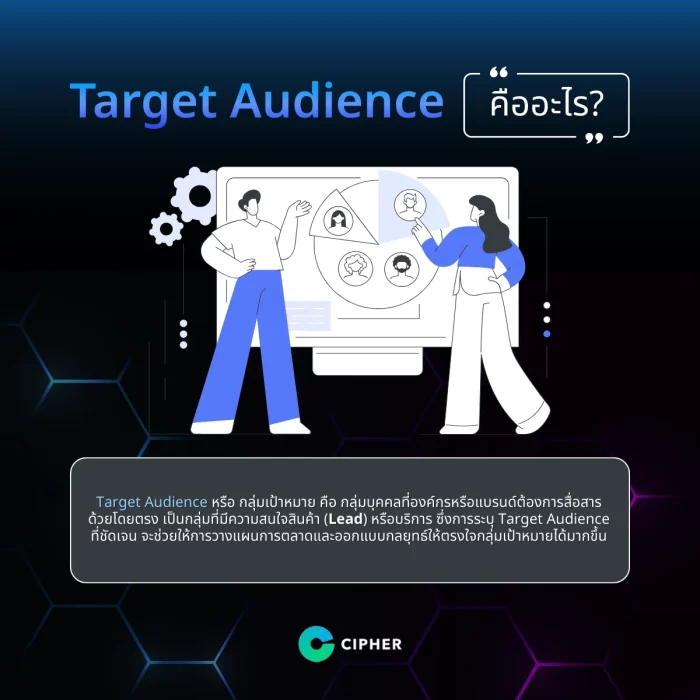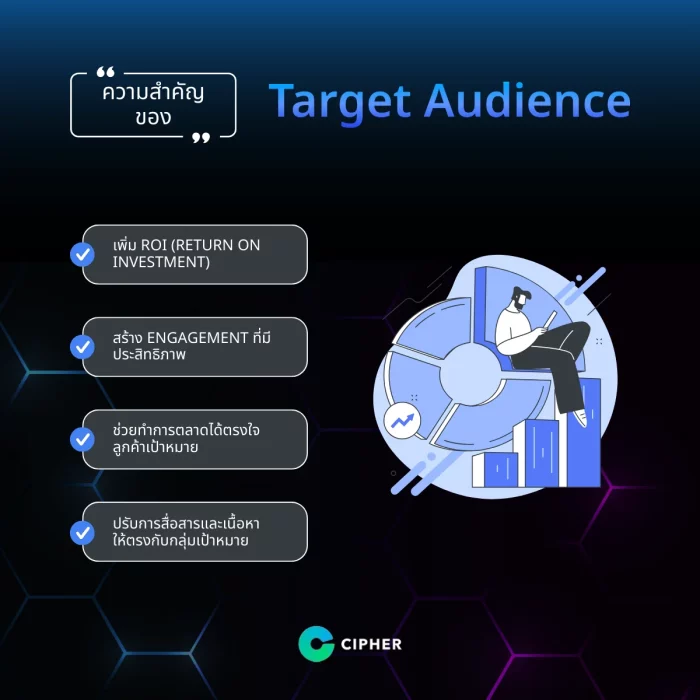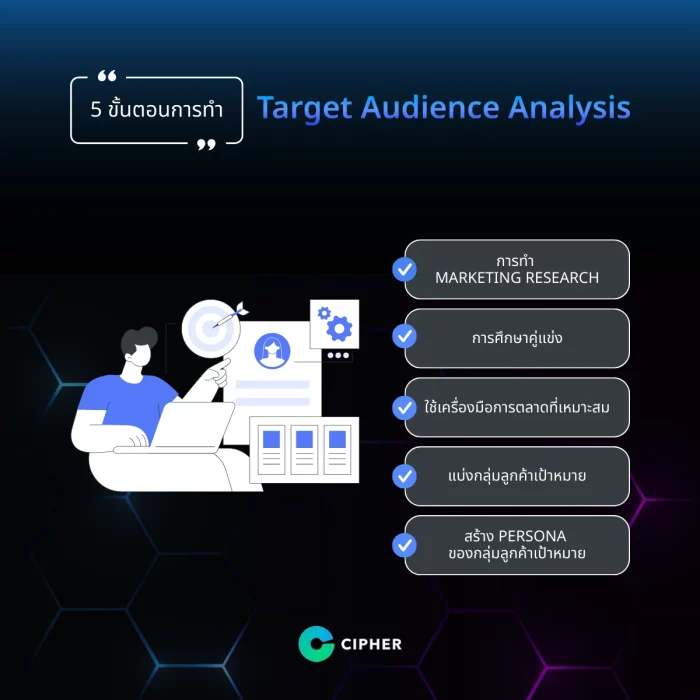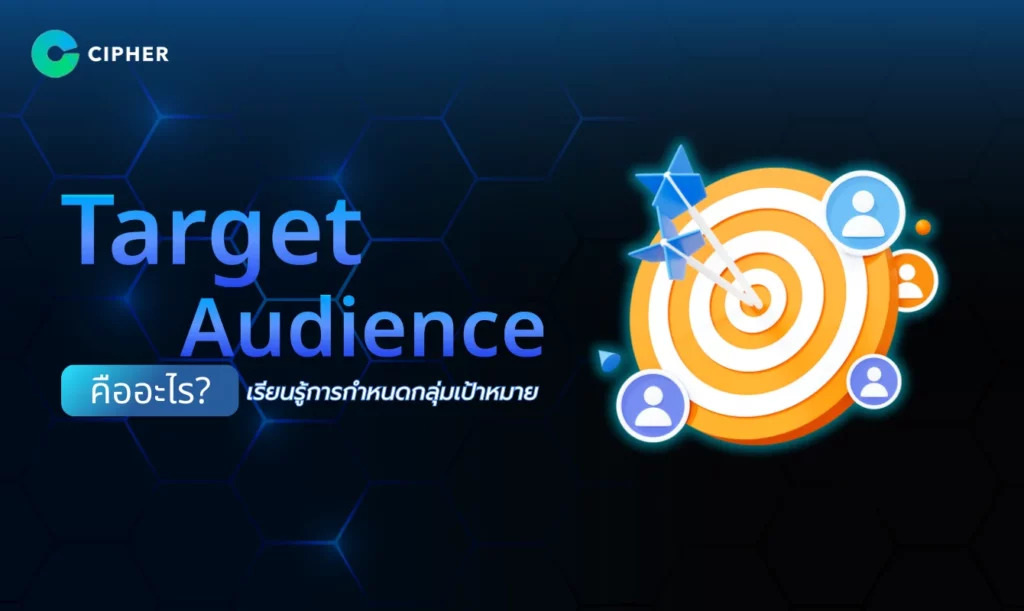Table of Contents
What is Target Audience? How to define your target group and increase sales for your brand
Target Audience is one of the key factors that make your marketing strategy more effective. Understanding that the Target Group is What and how to accurately segment customers will help you reach the customer on the spot and increase returns, especially in the era when Target Market is a competitive space full of information and options.
Understanding the importance of Target Audience helps ensure that email marketing with CRM is accurate and effective, whether content is tailored or strategically tailored to customer behaviour. Choosing the right target group enables email marketing. Becoming a powerful tool for greater engagement and sales growth.
What is a Target Audience?

Target Audience is a group of individuals that organizations or brands want to communicate directly with. The clear identification of Target Audience will help them plan marketing and design strategies to suit their target audience.
The Target Audience analysis takes into account factors such as age, gender, lifestyle, interests and needs. The deeper we understand the target audience, the better we can develop products and communications that meet the requirements, leading to sustainable relationships and long-term business success.
What's the significance of Target Audience?
Understanding Target Audience is critical to marketing because it enables businesses to effectively adjust their strategies and content to meet their needs. Knowing them increases opportunities for participation and higher returns.

1. Increase ROI (Return on Investment)
Targeting customers is the starting point for businesses to focus on marketing budgets in the highest purchasing potential, resulting in better results, reduced unnecessary costs and increased ROI.
Knowing the Target Group is a highly profitable customer that will allow businesses to better choose the right channel to reach these groups, whether online advertising, promotions or marketing campaigns that can attract them as much as possible.
2. Create an effective Engagement
Target Market designation is
This will help businesses create content or campaigns that better match their target audience’s interests. Making them feel that the brand understands and meets the requirements will increase participation, which is key to building customer loyalty.
When businesses are deeply connected to their target customers, communications and marketing campaigns will be improved, enabling more effective engagement with customers and leading to a sustainable relationship development.
3. It helps to market directly to the target customers.
Knowing the Target Group as a true target customer allows businesses to create marketing campaigns that meet their needs and not waste their time trying to reach out to people who are not involved. Targeted marketing will help the campaign achieve better results.
Targeted marketing is to help businesses save time and resources to communicate with customers who are not yet ready to buy, making communications more accessible to decision makers and faster sales.
4. Adjust communication and content to match the target audience.
Target Market is what enables businesses to better tailor their communications or content to their target audience’s interests and behaviors. When they know these customers, they can use the language and media appropriate to each group of customers, making communication closer and more efficient.
Content and communication adjustments based on the characteristics of the Target Group are strategies that enable businesses to reach their target audience meaningfully, which will increase opportunities to generate positive feedback and purchase products or services from those customers.
There's a type of Target Audience. Anything?
Understanding the type of Target Audience enables businesses to design marketing strategies that better match their target customers, which can be divided into three categories:
Target group from demographic data.
Population data targets segment customers based on basic data such as age, gender, education, location and revenue. These data help businesses identify their customers’ demographics.
Population-based segmentation enables businesses to design products or services that meet customer needs. Understanding Target Audience from this perspective provides a more accurate marketing strategy and better alignment of marketing plans across different target segments.
a target audience of interest
a target audience of one's own interests
Target Market segmentation refers to the segmentation of target groups from individual interests. It refers to the definition of target groups that have unique interests in products or services that suit themselves, such as interests in specific music, hobbies or different lifestyles.
Knowing this type of target audience, for example, if they are interested in a game machine or have already purchased, there is a high chance of interest in other accessories, such as Joy Game or Discard, enabling businesses to create marketing campaigns to stimulate purchases and build relationships with individual customers, enabling higher engagement and purchasing.
5 Procedures for Target Audience Analysis

Conducting Marketing Research
competitive education
Studying competitors is another important step in achieving Target Group Analysis by seeing which market your competitors are attracting and using strategies. What marketing competitor analysis gives you the opportunity to reach target market segments that may be overlooked or not fully serviced can be a guide to improving your strategy?
Use appropriate marketing tools.
Choosing the right marketing tools can significantly improve the efficiency of Target Group Analysis, such as using a CRM system such as HubSpot to manage customers and build a database for each customer, or using POS and subscriber systems to track customer buying behavior and accessibility. And this information allows you to see the target group or target customers who are likely to be long-term customers.
Segment target customers
Target segmentation is based on different characteristics of target customers, such as age, gender, purchasing behavior and interest. It is an important step in the Target Group Analysis process that allows you to identify the group that best suits your product or service. Good segmentation will enable more efficient communication and marketing and make the campaign meet the needs of each customer group.
Create Persona of the target customer group.
Creating Persona of the target market segments creates a tangible customer image based on CRM data or existing data. The Persona segmentation provides you with individual customer characteristics such as age, career and interest. To enable them to design marketing strategies that better meet the needs of their target audience.
Conclusion
Target Audience is an important step in planning marketing strategies because it allows businesses to focus on the specific needs and behaviors that suit their products and services. Knowing how to find Target Audience makes marketing more efficient and can increase customer participation more accurately.
To optimize target audience, we introduce CRM Traning from CIPHER, which will help your team understand the use of CRM tools to analyze data and market to match the target audience, increasing your chances of success in your business.
Frequently Asked Questions About Target Audience
How to find Target Audience is an important step in effective marketing. We have compiled a number of common questions about Target Audience to help businesses reach the right customers and increase growth opportunities.
What does a target audience need?
Target Audience, or target audience, should contain these important information to help market efficiency, including:
- Population characteristics: such as age, sex, education, occupation, income, housing, which helps to better understand the people you want to reach.
- Behavior: e.g., purchasing behaviour, brand loyalty, Internet usage, and customer’s preferred access to the product.
- Attention and Needs: e.g. interest in goods or services or issues that customers want to solve.
- Factors and lifestyle: Such as values, beliefs, lifestyle to help design messages or ads that match the target audience.
- Segmentation by location in the purchasing process: e.g., start-up customers know the brand, customers who are interested, or groups that are ready to make a purchase decision.
What factors differentiate Target Marketing from Target Audience?
Target Marketing is the overall marketing planning and analysis process, including target customers, strategy and marketing to make campaigns and goods and services accessible to the most appropriate group. Target Audience focuses on individual target customers, which is only a component of the Target Marketing process.
Target group has Anything?
The Target Group or Target Group is a group of target customers. It is divided into 3 main categories as follows:
- Demography-based target group: Categorization based on basic data such as age, sex, education, income or social status.
- Interests: Categorized by specific interests, such as hobbies, passion for activities or lifestyle-related things.
- Target groups based on specific interests (Purchase Intensions): Grouping based on individual purchase intentions or specific needs.
Target (Target) is What?
Targets are customers or consumers that businesses want to reach and communicate with. Targeting enables clear direction of marketing planning, effective strategies and content matching their needs and behaviors, resulting in more accurate marketing and increased opportunities for success.





